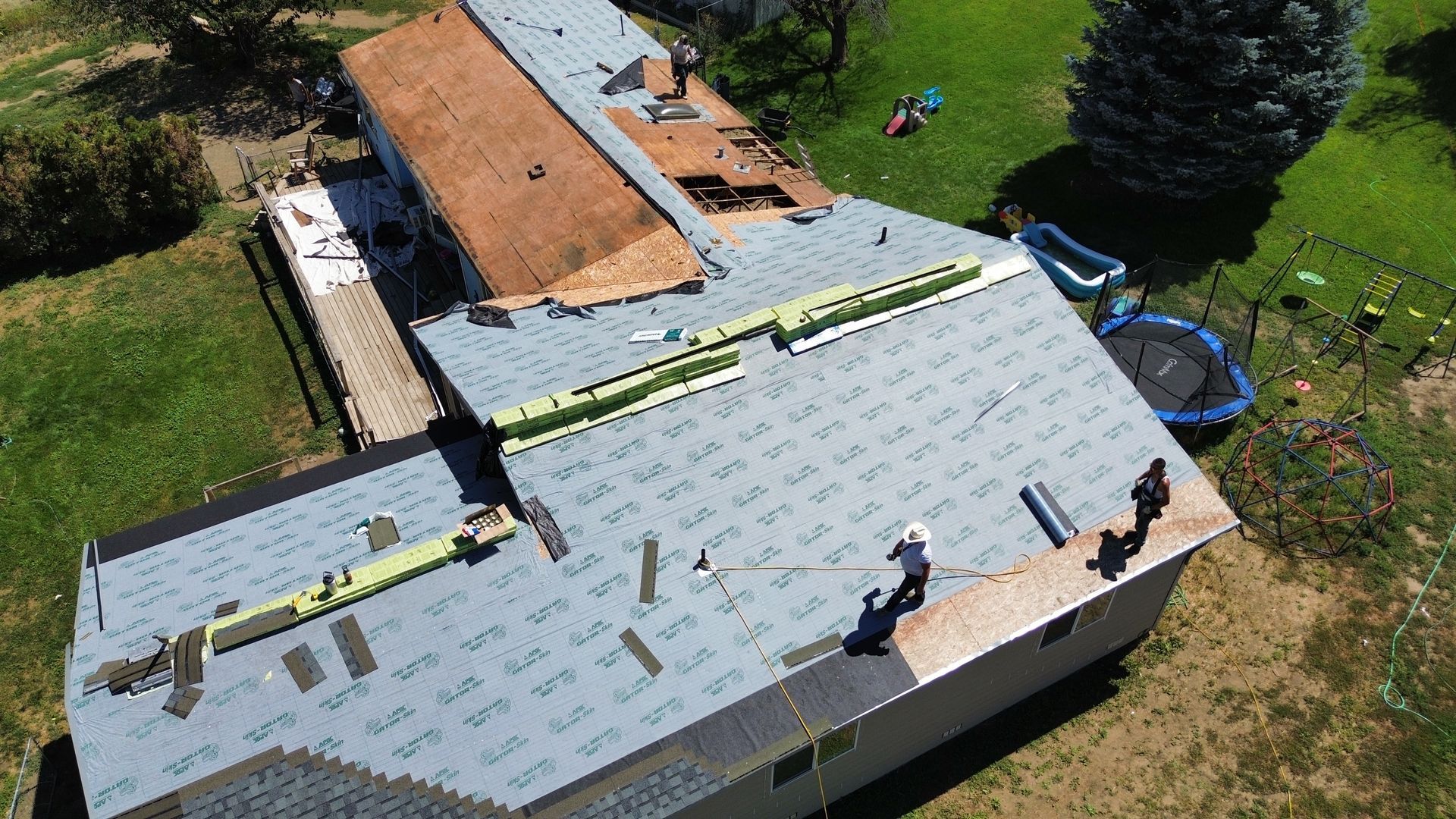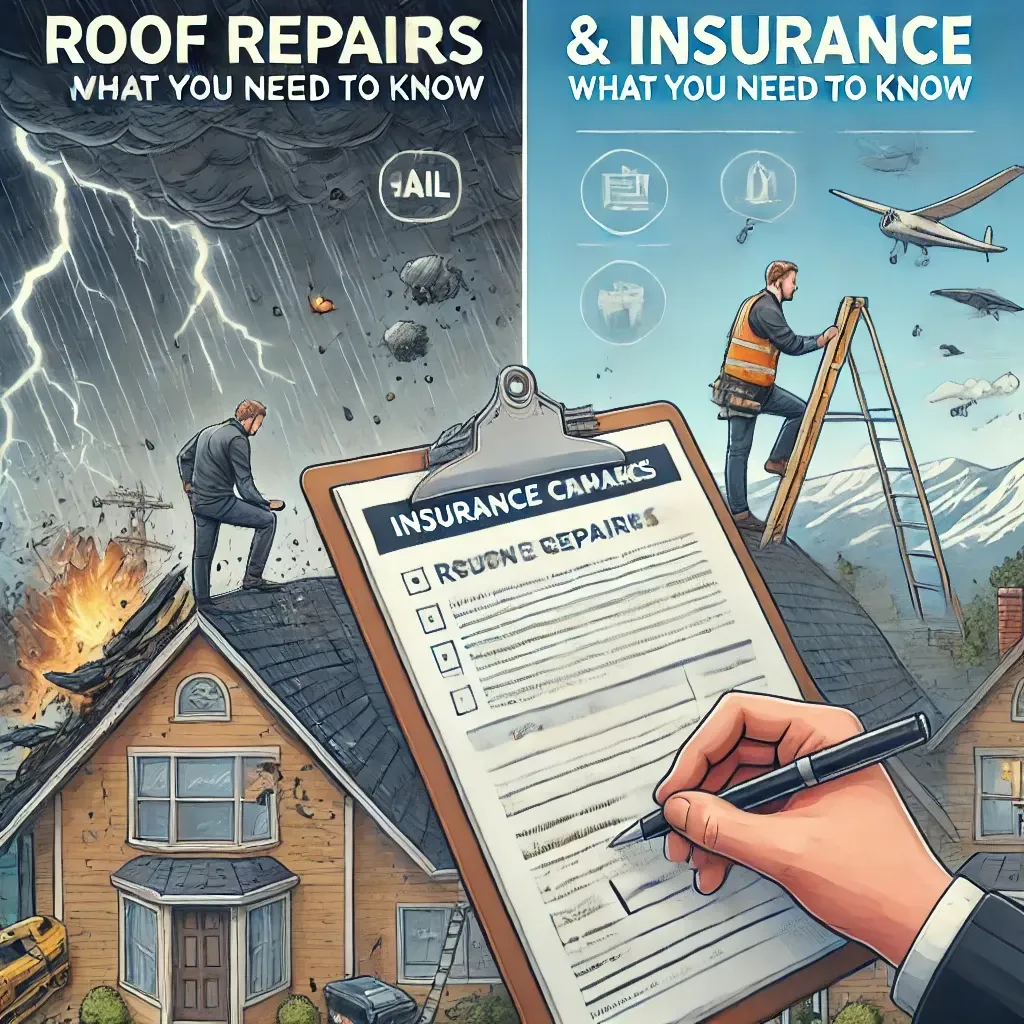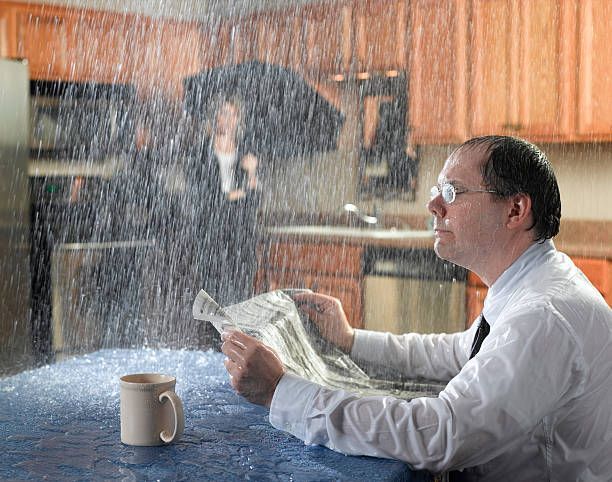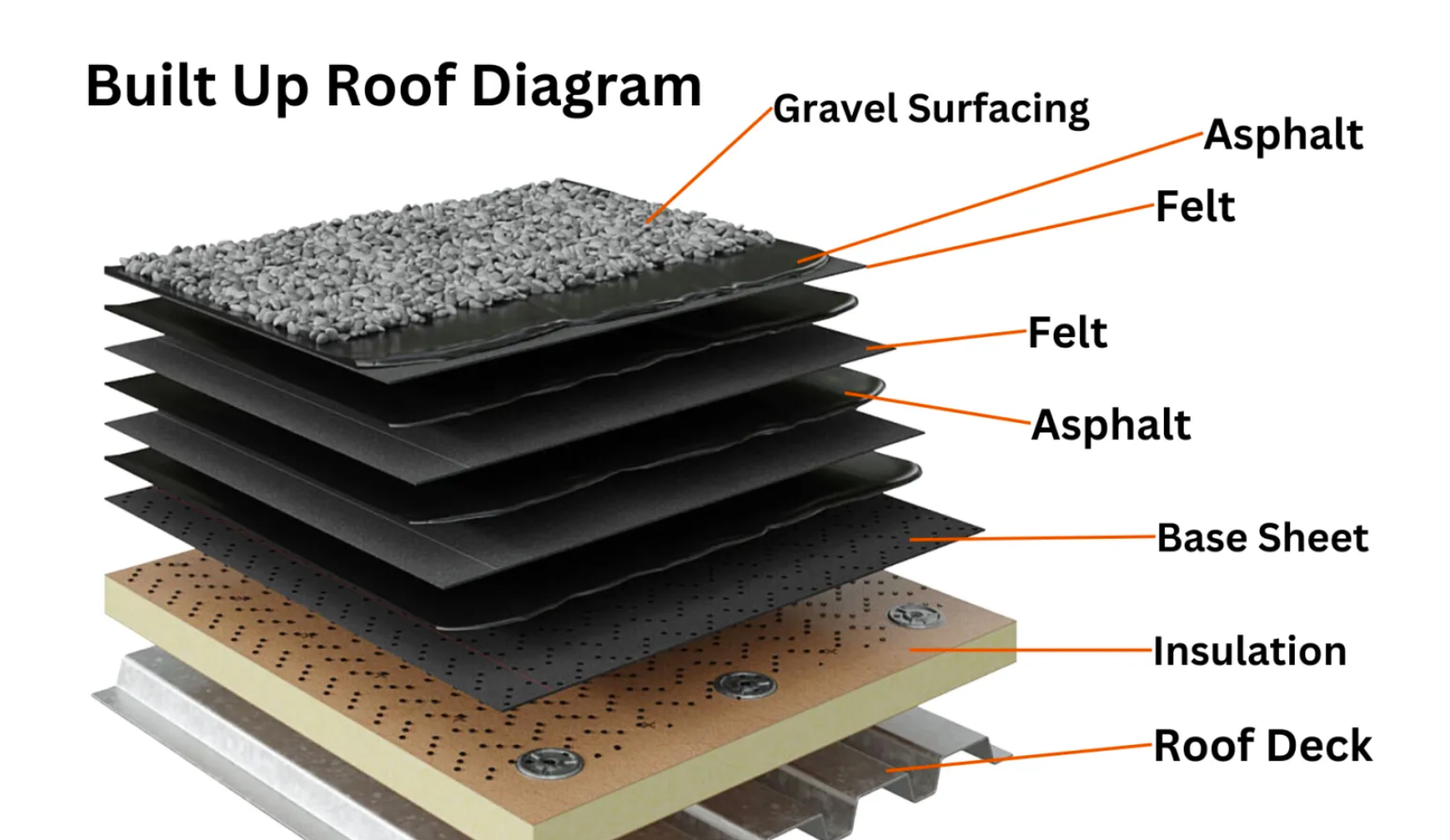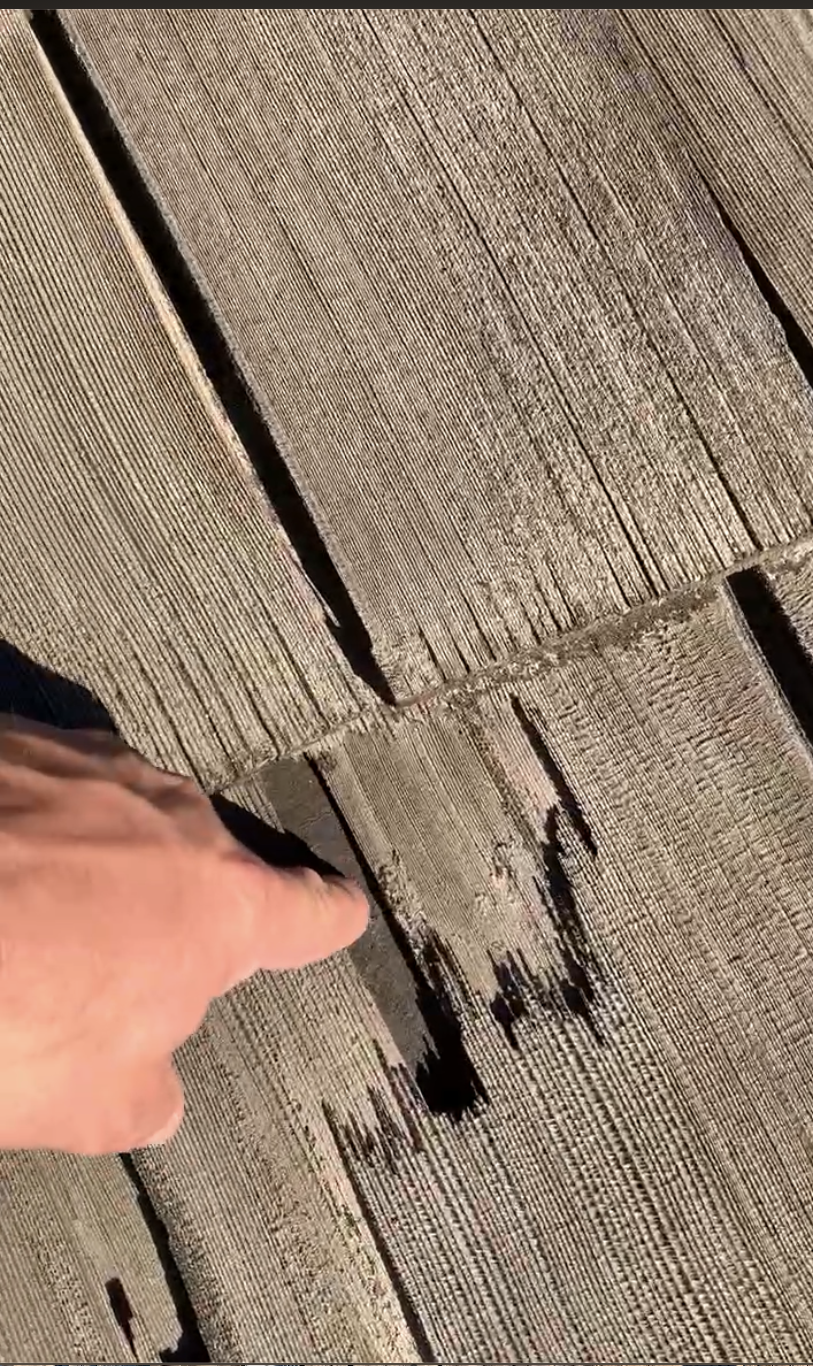DIY Asphalt Shingle inspection
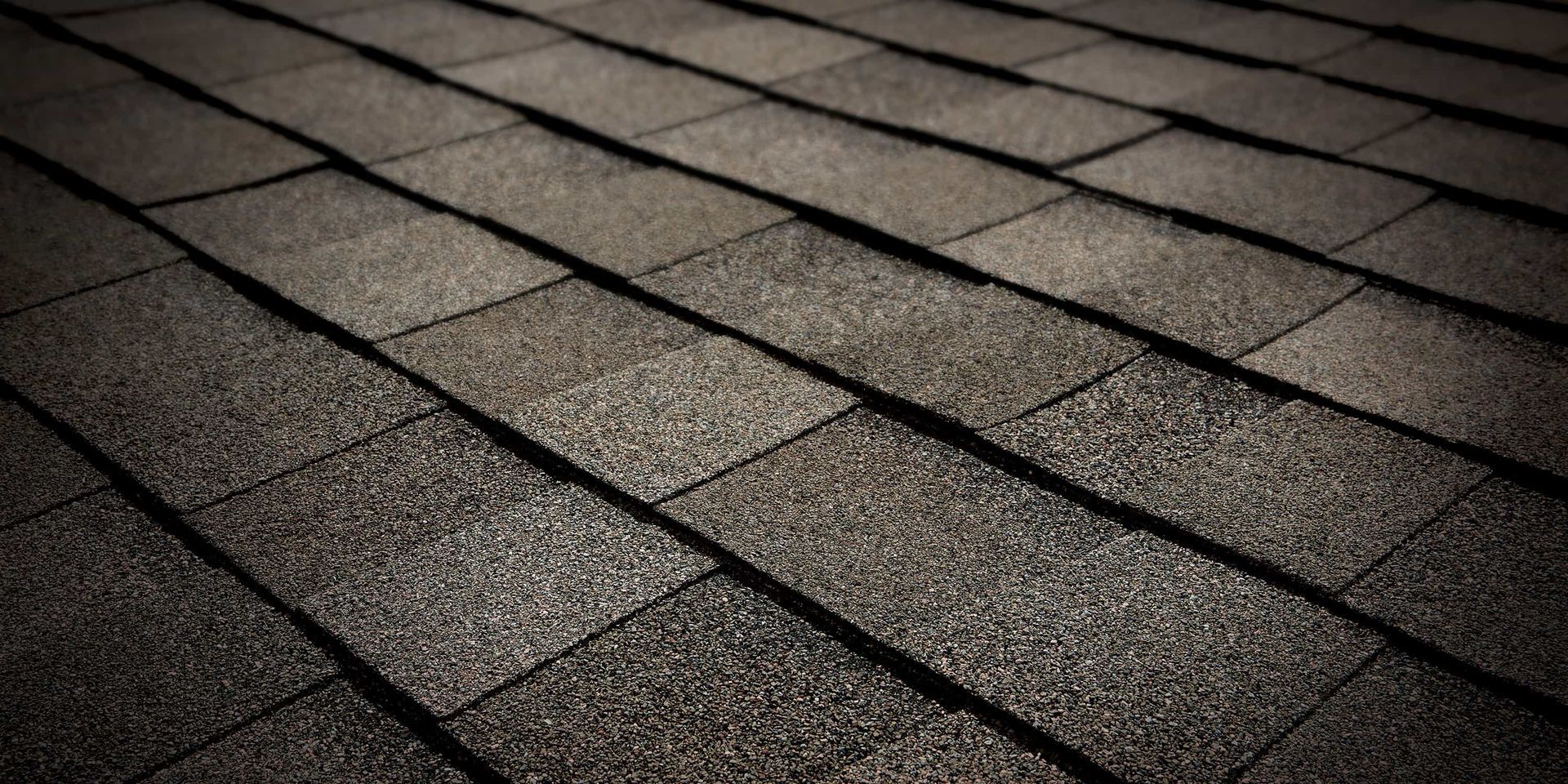
In this article we will look at the important aspects to determine if your composition roof is going to last for many years to come or if it’s time to start planning for a new roof. This article is to give you a shallow understanding of what to look for. In many cases a professional in your area may need to be called. In Yakima, Washington roofing contractors may utilize different practices then in other parts of the country like, Las Vegas, NV. In Las Vegas, many roofing contractors believe that the underlayment is the roof system and will not install the roof as we would here in Yakima, WA.
Just as with inspecting a shake or wood shingle roof, the south facing decks that are exposed longer in the day to the sun will have the most damage. We always begin with the south facing decks, if they are failing then the rest of the roof won’t be far behind.
To determine if the roof is failing, we need to look at the following:
1. Wall, Valley, Vent and pipe flashings.
2. Roofing shingles.
3. Roof fasteners.
The first thing we will looks at are the flashings. Some roofing contractors will bid to use the cheapest materials possible to keep the price down and win your project.
Check
Attic Ventilation: First check all of your attic vents and flapper vents. If they are made of plastic they could be cracked long before the roof’s life has expired. If everything else in the check list passes except for your vent’s, you just need to have these replaced and you should be in good shape.
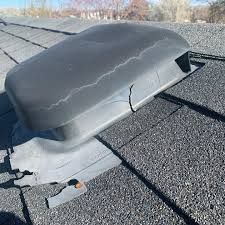
Pipe Flashings: The rubber around pipe flashings do fail and can leave large voids around your pipes for moisture to get into your home. Though stone coated pipe flashings are not sold anymore, the rubber on those types of flashings would fail after the first few years. Just like the attic vents, if the rest of your roof passes the check lists then just get new pipe flashings and your roof should last.
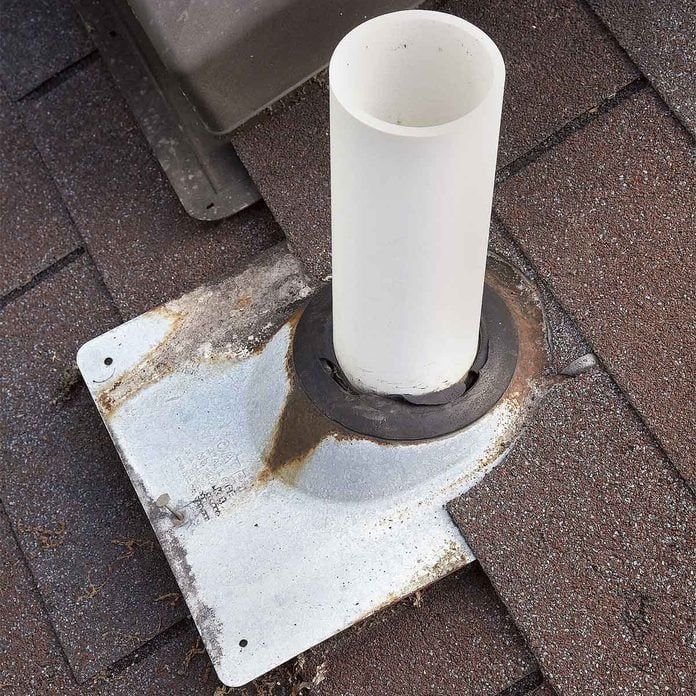
Wall flashings: For a composition roof we have three types of wall flashings.
Step flash runs up the sides of a dormer or wall, they are typically 8” by 8” square pieces of thin metal that are bent in half. 4” rests on the roof and 4” go up the side of the wall. One step flash should sit on each shingle as they go up the wall. Some installers will use one step flash for every two shingles, they may get away with this if they use a longer step flash but this isn’t good practice. The step flashing should come down to the bottom of the shingle so that it’s hidden, if it’s exposed it should be ok just as long as it doesn’t go up too high above the nail line of the shingle its sitting on.
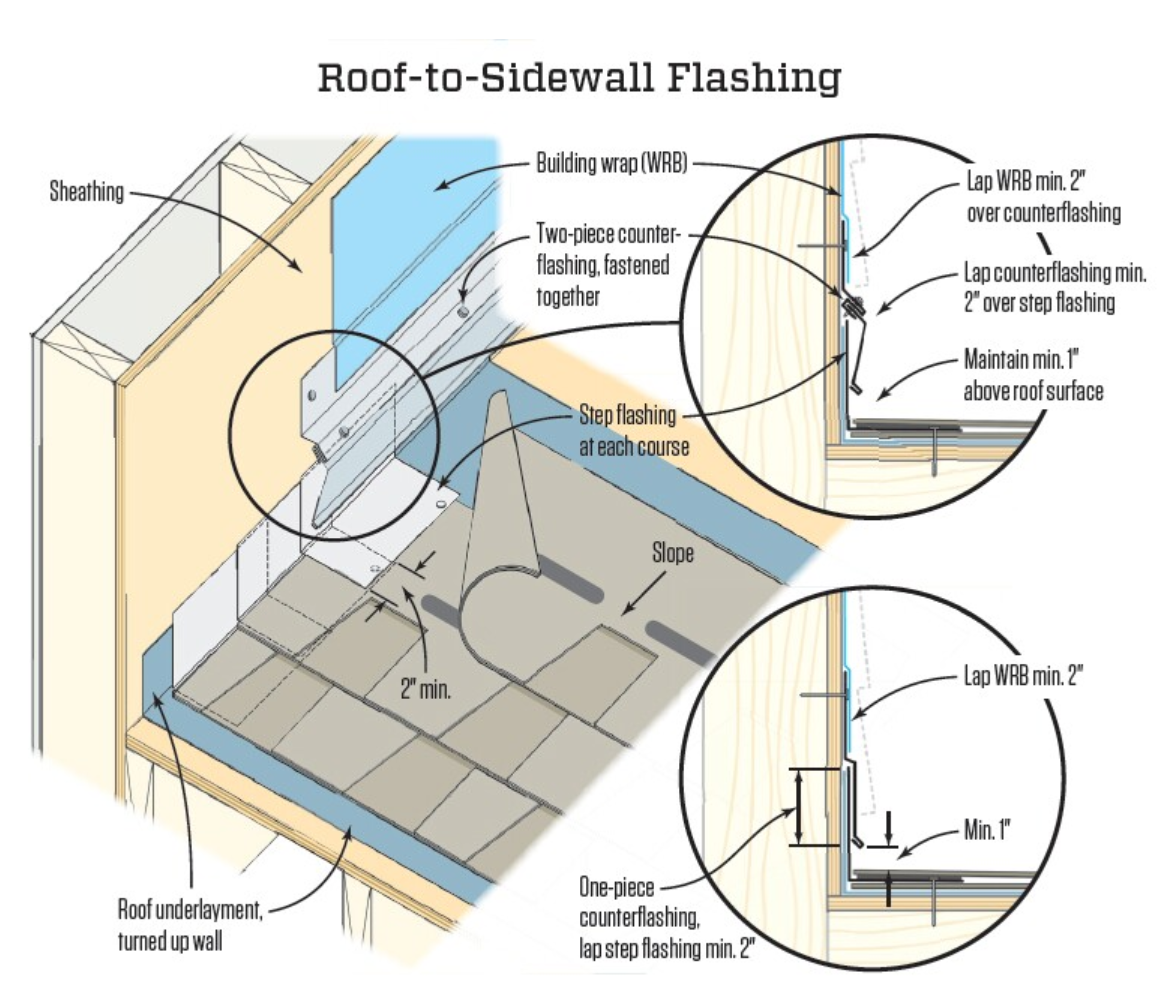
Roof to Wall is a flashing that spans the width of the bottom of your chimney or dormer wall and is typically bent in half so that 3” extends up the side of the wall and 4” rests on the deck. They are not pieces of metal like step flash and come in 10’ lengths. They must be cut and bent around the two bottom corners of the chimney, skylight, or dormer. Check the corners, if you can see a void you could have a leak in this area.
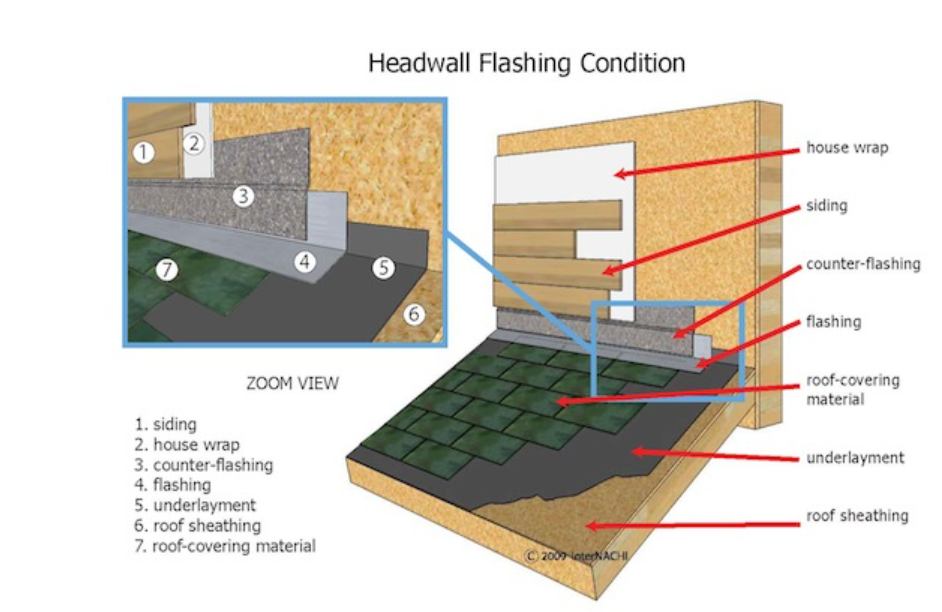
Back Pan is metal used on the back side of skylights and chimneys. The metal may extend up the side of the curb or chimney by 4” and rest on the roof by 14”. The back pan must be bent in like manner as the roof to wall and all water must drain onto the last piece of step flashing. Typically, sealant is used on all four corners.
If you’re suffering leaks around a chimney or skylight it could be that they placed nails too low on the back pan metal and when snow builds up behind the skylight or chimney it floods the nail. Other issues with flashings could be that the installer placed nails within the first 2” of the wall to install the step flash, nails should be installed at the outer most edges of the step flashing.
If holes exist too close to the wall water may find the nail penetration and leak into the building. If flashings are leaking and the rest of the roof is passing the inspection then getting these troubled areas fixed should be all that’s needed.
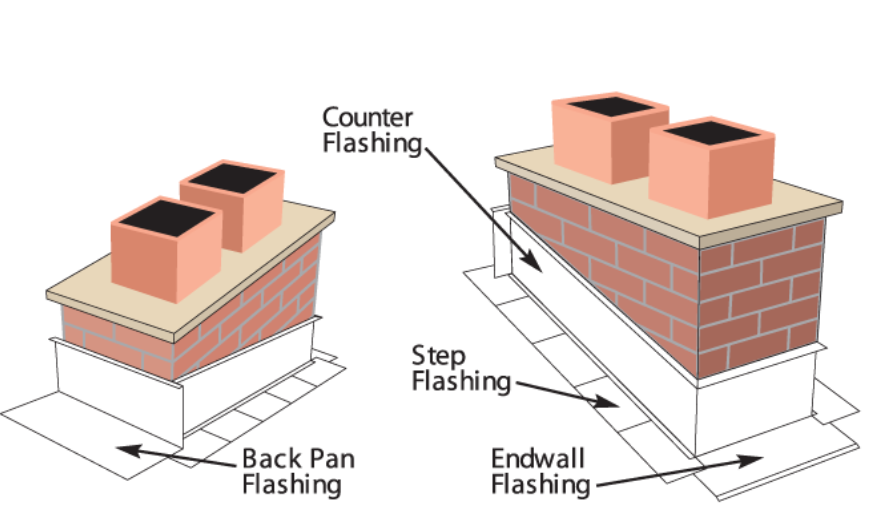
Valleys are the last flashing that we will discuss. We find valleys that are roofed wrong all the time. Especially in areas that are complicated and require a great understanding of proper installation specs. Other issues can be that the valley metal is rusting out or that the installers placed nails very close to the center of the valleys, (More common than should be). If this is the only issue, then removing the old valley and installing a new one should add life to your system.
There are many ways that installers can get it wrong when it comes to valleys.
*If it's leaking it should be re-done.
*If it's not leaking but you see rust it should be re-done.
*If you see humps in the shingles, the valley metal could be coming loose.
*If you see nails within " inches from the center, the valley should be re-don.
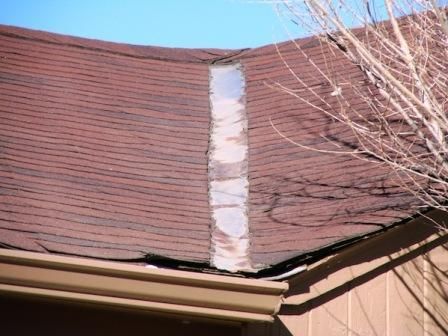
With this basic understanding you should be able to determine if flashings are causing your roof to fail. But before you hire someone to fix these issues let’s check the condition of the shingles.
Granule loss is common when the roof is at the end of its life. However premature granule loss can come as a result of someone shoveling snow and running a shovel across the shingles. Heavy traffic from kids playing on the roof can quickly tear up a roof on a hot summer day. If you see one or two areas of the base matt then replacing a few shingles may be the right move, however if a greater percentage of the roof has had a great level of granule loss, then it’s time to plan for a new roof.
If you see a white sheen in the right lighting on your roof what you’re seeing is the fiberglass matting. The asphalt water proofing layer is nearly gone on the top side. This is almost the same as a cavity burning through the outer layers of your tooth, exposing your root canal. Your roof may be holding out moisture at this point, however at any time in the near future you could have severe leaks.
The fiberglass should prevent the shingle from becoming too brittle and breaking off in pieces in the wind, but if they fiberglass is destroyed by UV’s cracks may begin to form.
This is a roof that we tore off in December 2023. The shingles had cracks in them and you can notice that on the old felt paper that moisture was penetrating through the shingle and staining the felt. Everyone of those spots are wet at the time we took this photo.
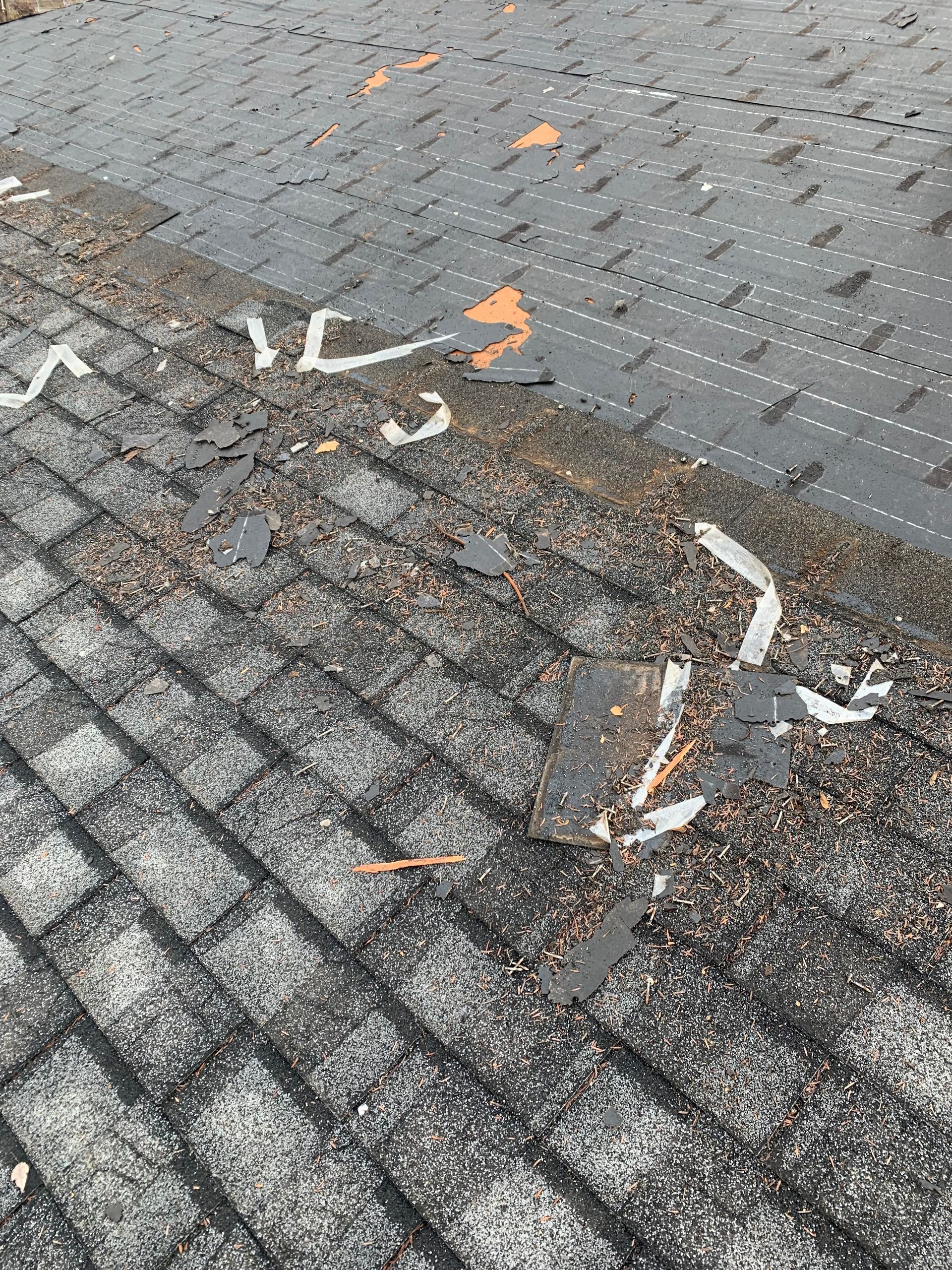
Other issues to look for with shingles is if they are sliding down the roof slope. Typically, this is easy to spot because the shingles nail line will be exposed. This may happen more typically on steeper slopes and when stapples are used as the fastener. However, we have seen many roofs’ failings prematurely due to the fasteners being placed above the nail line. The drag loads of heavy snow pull down on the shingle and the shingles tear around the nail as they slip down the roof.
In this photo you can see the small nail holes and how far above the nail line the installer placed the nail. Refer to our post on nailing to get a deeper understanding of the importance of nailing.
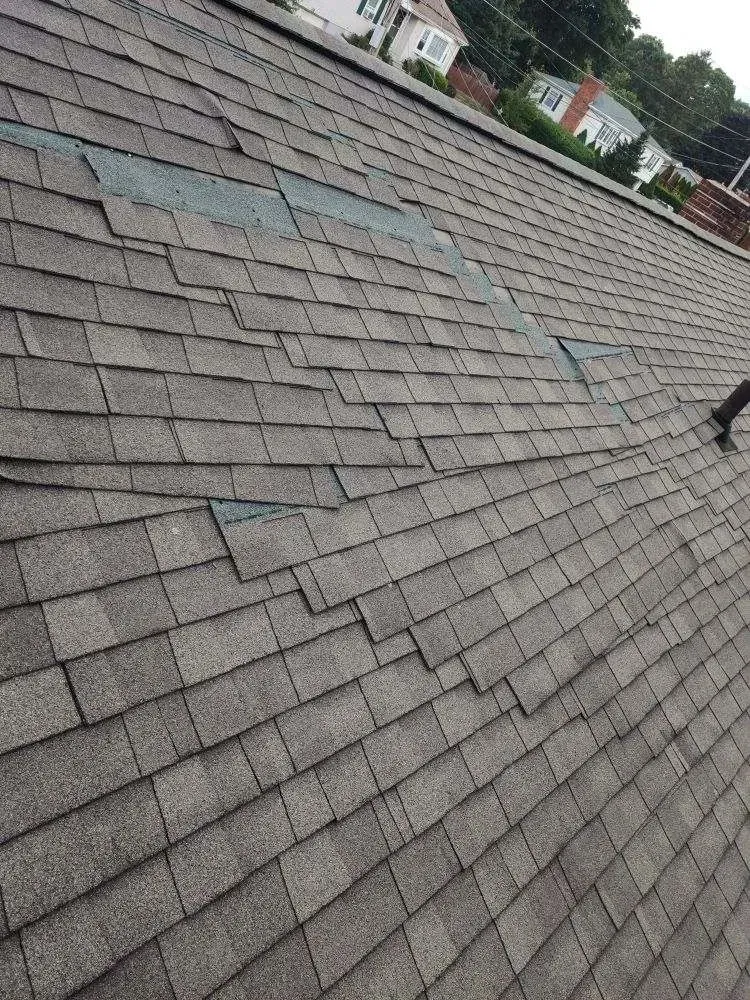
Fasteners are another issue, however, unlike with flashings if the fasteners are not installed to spec, then a re-roof is most likely going to be needed. Fastener issues are the leading cause of roof (premature) roofing failures. In todays roofing industry installers take pride in speed and quantity over quality. Most believe that the faster they are the better installer they are. As roofing installers install your shingles, they are also voiding your manufacture warranty in the process of trying to earn a buck. The result is that your investment in a 30-year roof is cut down to half and many customers find themselves back in the market for a new roof, despite the life remaining in the shingles. We have articles on nailing, this should help you determine if your roof passes this inspection or not.
A person could typically attribute most wind damage to improper nailing. If you discover nailing issues plan for a new roof. You may be able to limp the roof through a few years by having repairs done, however one good storm could rip off entire sections and cause major water damage so do not try to make the roof last the remaining life of the shingles.
Small cracks that are forming in the shingle is another visual aid to help you decide. When the cracks begin to form it’s time for a new roof.
In Yakima and surrounding areas like Selah, Naches and Ellensburg we see a lot of wind at the start of fall. This season is when we see most of the wind damage but summer storms can also be strong enough to push down trees and rip metal roofs off large warehouses. So having a roof shingle not fastened properly stands little chance when we enter into our windy seasons.
